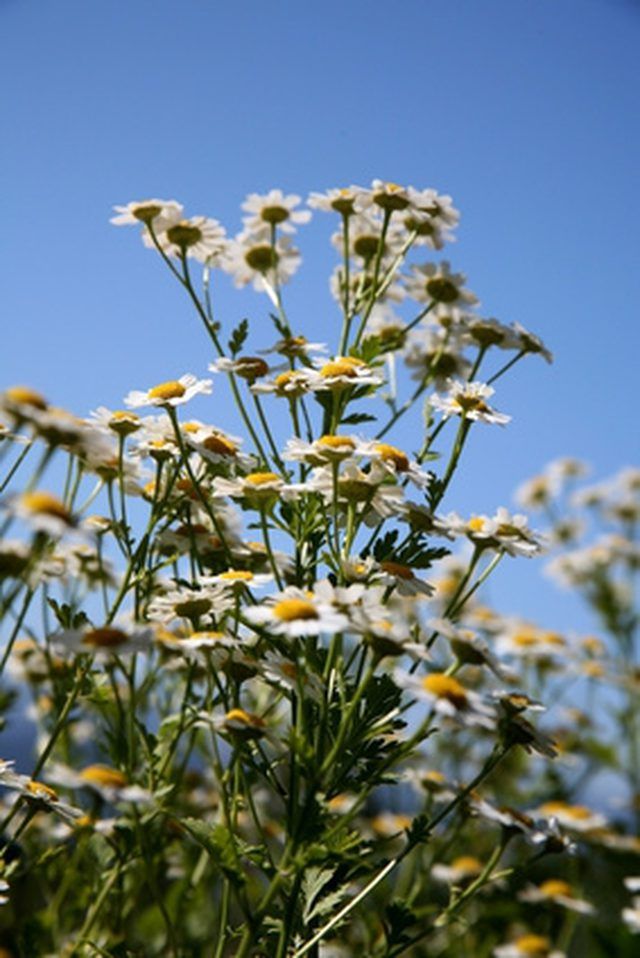Bulbs
Flower Basics
Flower Beds & Specialty Gardens
Flower Garden
Garden Furniture
Garden Gnomes
Garden Seeds
Garden Sheds
Garden Statues
Garden Tools & Supplies
Gardening Basics
Green & Organic
Groundcovers & Vines
Growing Annuals
Growing Basil
Growing Beans
Growing Berries
Growing Blueberries
Growing Cactus
Growing Corn
Growing Cotton
Growing Edibles
Growing Flowers
Growing Garlic
Growing Grapes
Growing Grass
Growing Herbs
Growing Jasmine
Growing Mint
Growing Mushrooms
Orchids
Growing Peanuts
Growing Perennials
Growing Plants
Growing Rosemary
Growing Roses
Growing Strawberries
Growing Sunflowers
Growing Thyme
Growing Tomatoes
Growing Tulips
Growing Vegetables
Herb Basics
Herb Garden
Indoor Growing
Landscaping Basics
Landscaping Patios
Landscaping Plants
Landscaping Shrubs
Landscaping Trees
Landscaping Walks & Pathways
Lawn Basics
Lawn Maintenance
Lawn Mowers
Lawn Ornaments
Lawn Planting
Lawn Tools
Outdoor Growing
Overall Landscape Planning
Pests, Weeds & Problems
Plant Basics
Rock Garden
Rose Garden
Shrubs
Soil
Specialty Gardens
Trees
Vegetable Garden
Yard Maintenance
Description of Daisy Flowers
Description of Daisy Flowers. The daisy looks like a simple flower, but it is actually a composite of several different parts joining to form the flower. Although many insects visit the flower each day, the daisy is not bothered by any of them. Generally, a daisy is white with a yellow center, although sometimes it can be pink or a rose color....
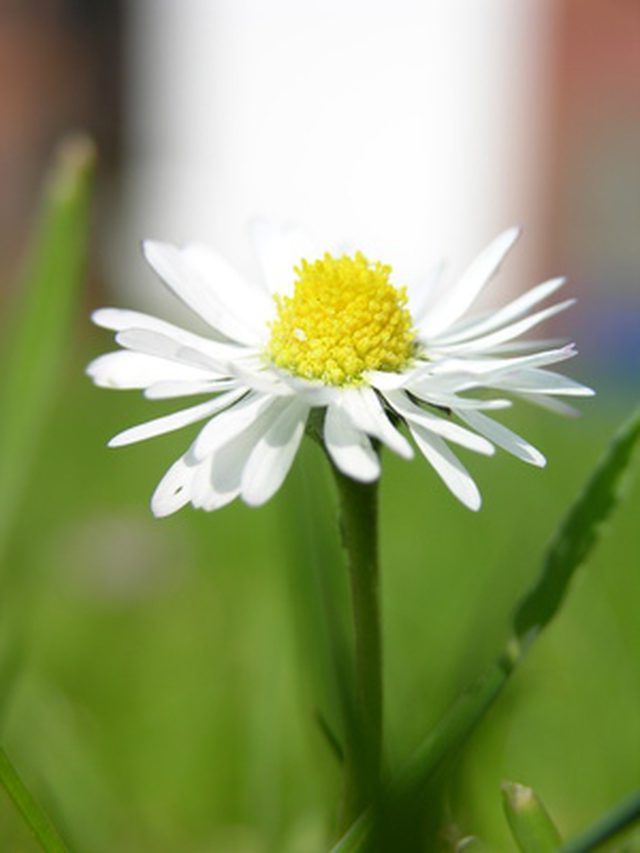
The daisy looks like a simple flower, but it is actually a composite of several different parts joining to form the flower. Although many insects visit the flower each day, the daisy is not bothered by any of them. Generally, a daisy is white with a yellow center, although sometimes it can be pink or a rose color. Throughout history, the daisy has been featured in myth, literary works and legend. The name originates from the Anglo Saxon word meaning "day's eye." The name is appropriate since the flower opens in the morning.
Parts
The middle of the flower is known as the central disk, which houses the disk florets. The petals are called the ray florets or rays. The stems have no leaves and support only one flower, but the plant itself has flower stalks of 3 to 4 inches. Depending on the variety, the leaves of the daisy can be smooth or hairy.
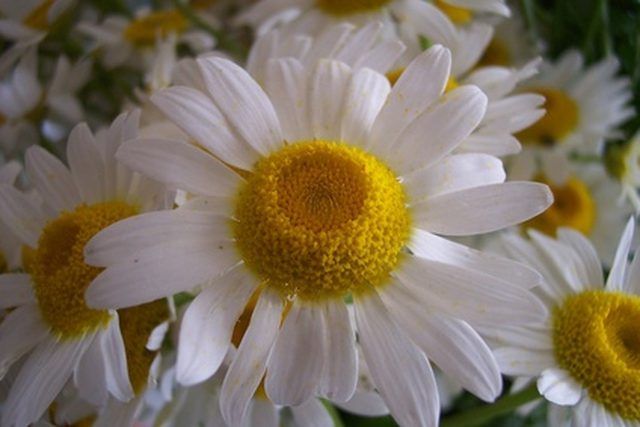
Names
Some descriptive names for the daisy are moon flower, Saint John's flower, moon pennies, Mary's Star, Mary's flower of God and priest's collar.
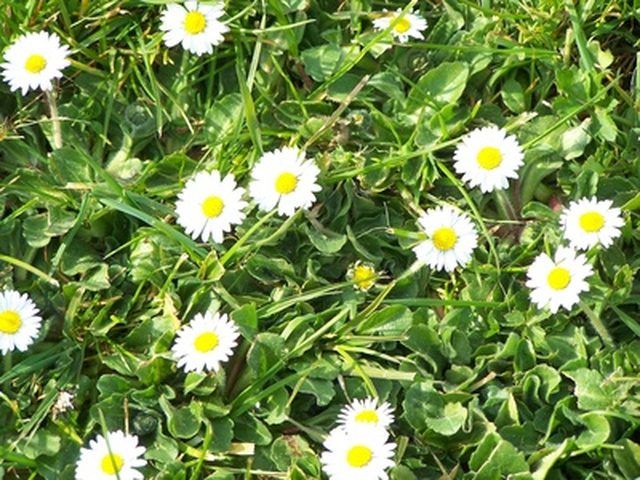
Varieties
The Shasta and the African daisies are the most popular; however, there are several other types. Some interesting varieties are the Spanish daisy, blue daisy, and lazy daisy, also known as the prairie daisy.
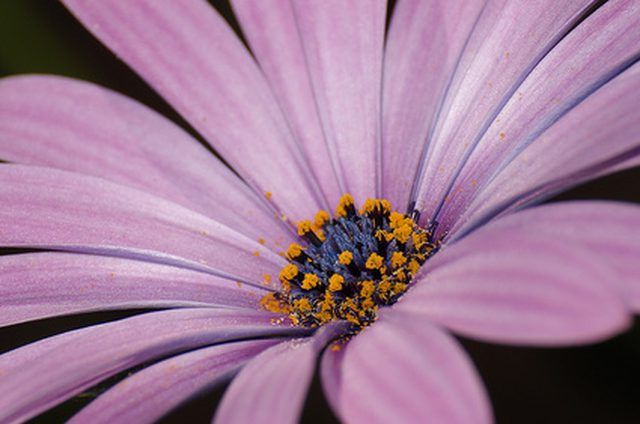
Symbolism
In the language of herbs, a daisy represents innocence, simplicity, cheerfulness, sympathy and a newborn baby. In the spring, if a dreamer dreams of daisies, this symbolizes months of good luck. If a person sends daisies, it means "loyal love."
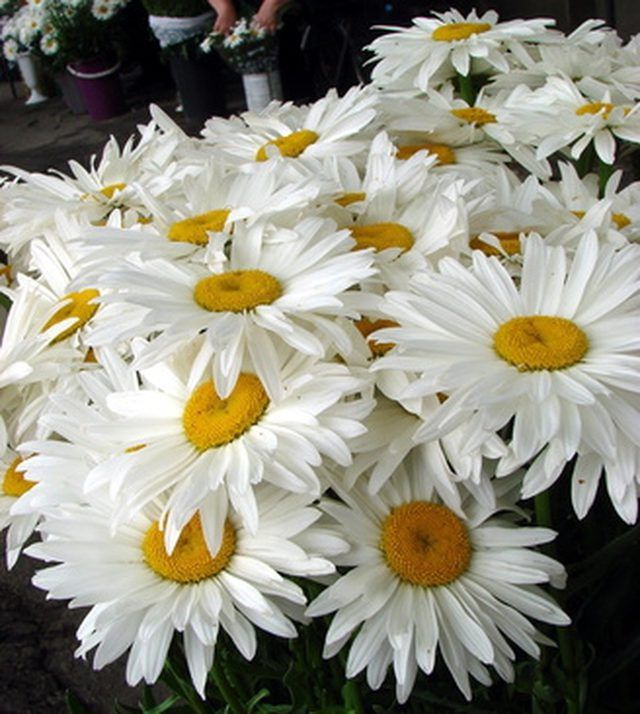
Daisies in Literature
Daisies are third in literary popularity with famous authors. Following the rose and the lily, the daisy appears in the works of Euripides, Chaucer, Shakespeare, Robert Burns, Ben Johnson, Shelley, William Wordsworth, Charles Dickens, John Keats and many more. A famous quote by Keats on his deathbed was the origin of the expression "pushing up daisies." Goethe immortalized the daisy when Marguerite needed to know if Faust loved her as she plucked the daisy petals and said, "He loves me. He loves me not."
Daisies in Mythology
The daisy received its scientific name, Bellis, from mythology. The guardian deity of the orchards pursued a young tree nymph without reciprocation. The nymph asked the gods for help in her flight from her undesirable pursuer. The powerful king of Argos was grandfather to the nymph, so when she appealed to the gods for help, they transformed her into a tiny flower named Bellis, and she escaped a terrible fate.
Daisies in Legend
A Christian legend tells that the Wise Men on their trek to find the Baby Jesus requested a sign to help them. They suddenly noticed many clusters of small, white, ox-eye daisies near a stable. Recognizing the flower's resemblance to the star overhead, they knew they had found the Holy Family.
